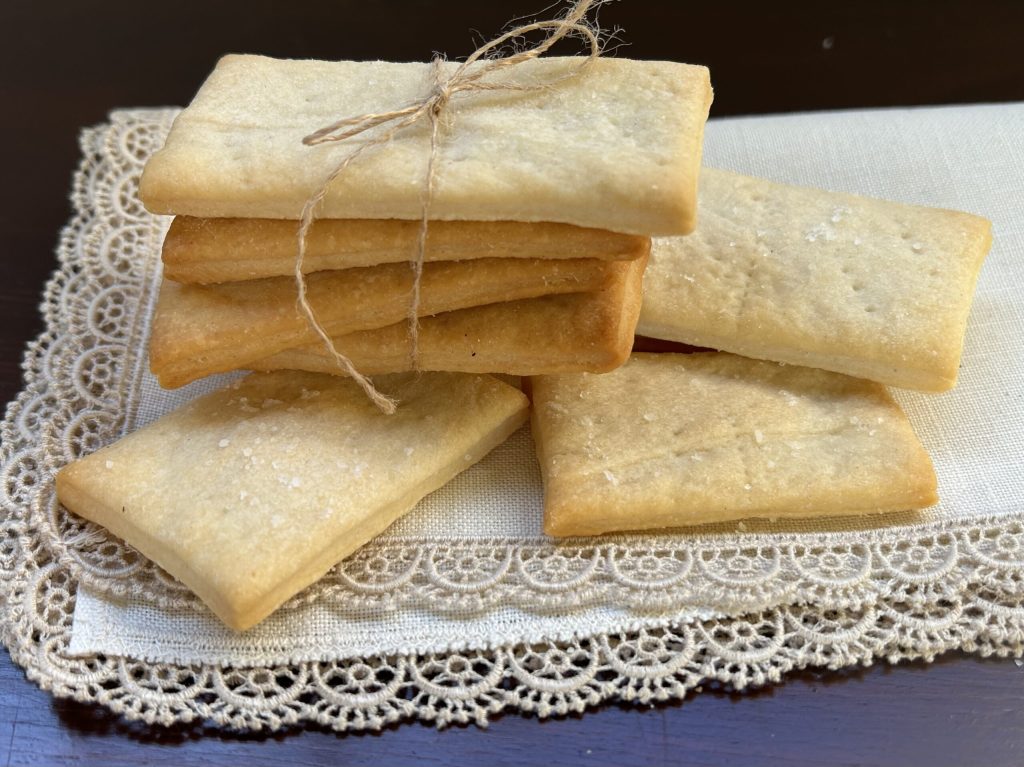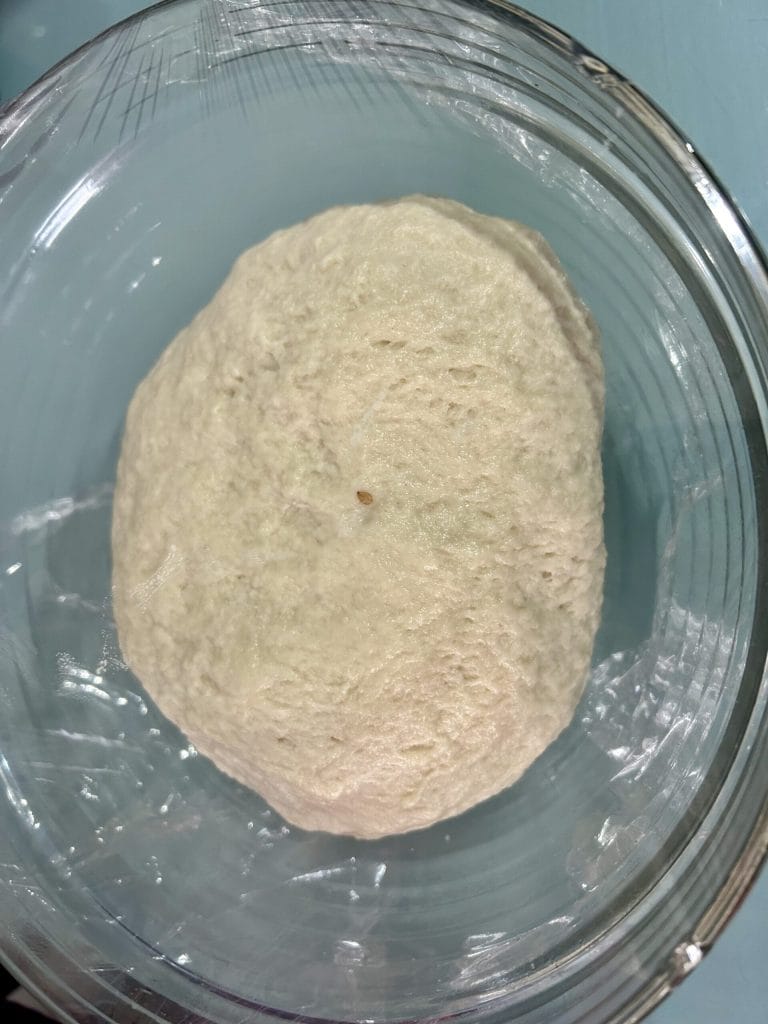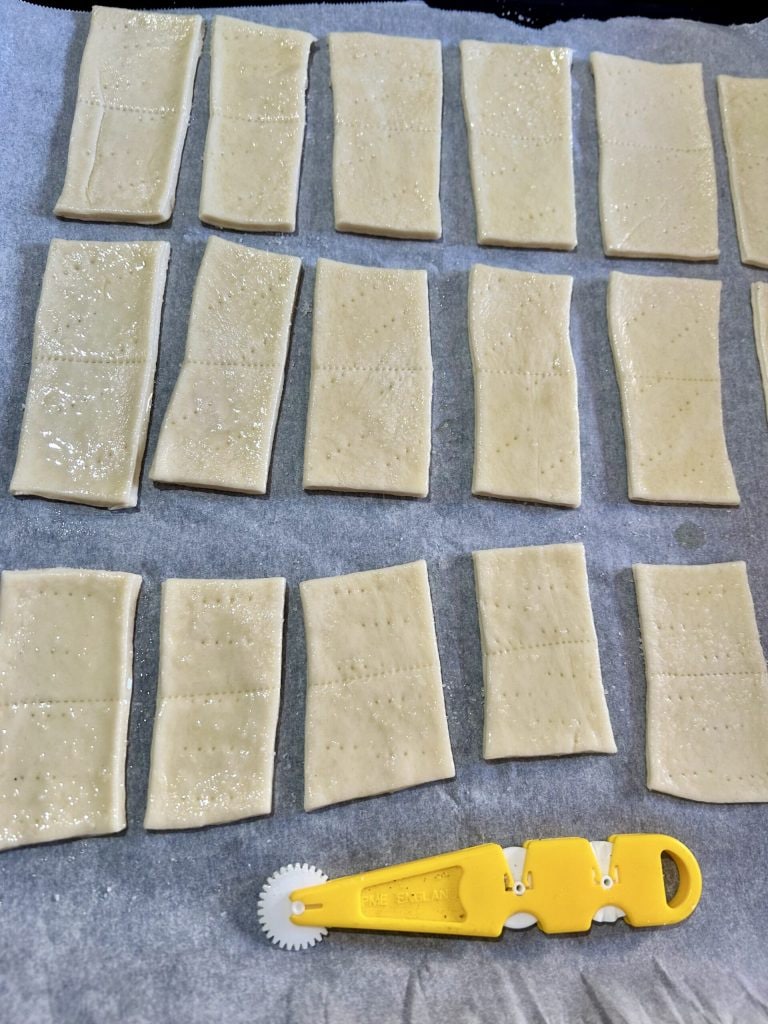Crackers are a salty biscuit, very thin and dry, ideal as a snack to satisfy hunger and very practical to take with you to school and work for healthy and light snacks.
Making crackers at home is simple, and the final result will leave you speechless. You will have these delightful salty sheets in the pantry with which you can prepare excellent appetizers and starters suitable even for vegan cuisine.
I started from my recipe for breadsticks with recycled sourdough, and with small variations, I made these excellent crackers, which are easier to take to work because their classic flat shape with holes prevents them from puffing up too much during baking, making them much more resistant yet still crisp.
For those who do not use sourdough do not worry, you don’t have to give up trying the recipe. Just remove the amount intended for sourdough, replace it with 4g of yeast, and add 200g of flour and 100g of water to the other ingredients.
The procedure for those using sourdough and yeast remains the same. It’s a very convenient recipe because you can also use sourdough refreshed the previous days. Mine was refreshed the day before.
The baking is very quick and should not exceed 12 minutes at 392°F; however, check the baking, and if needed, reverse the direction of the tray. They should not puff up too much, and when they are golden on the surface, remove them from the oven.
Before baking, it is recommended to brush the crackers with an emulsion of oil and a little water, then sprinkle them with salt on the surface. But if you have issues with using too much salt, you can skip adding it on the surface as the recipe already includes it in the dough.
This recipe will become one of my constants because we love savory snacks. On this occasion, I also remind you

- Difficulty: Very easy
- Cost: Very economical
- Rest time: 6 Hours
- Preparation time: 20 Minutes
- Cooking time: 12 Minutes
- Portions: 50 crackers
- Cuisine: Italian
- Energy 64.58 (Kcal)
- Carbohydrates 8.51 (g) of which sugars 0.14 (g)
- Proteins 1.31 (g)
- Fat 3.00 (g) of which saturated 0.41 (g)of which unsaturated 1.99 (g)
- Fibers 0.18 (g)
- Sodium 136.73 (mg)
Indicative values for a portion of 20 g processed in an automated way starting from the nutritional information available on the CREA* and FoodData Central** databases. It is not food and / or nutritional advice.
* CREATES Food and Nutrition Research Center: https://www.crea.gov.it/alimenti-e-nutrizione https://www.alimentinutrizione.it ** U.S. Department of Agriculture, Agricultural Research Service. FoodData Central, 2019. https://fdc.nal.usda.gov
Ingredients
- 3 1/4 cups all-purpose flour
- 1 1/4 cups sourdough starter (may not be freshly refreshed)
- 2/3 cup water (you might need slightly less)
- 1/2 cup vegetable oil
- 2 tsps salt
- 2 tbsps extra virgin olive oil
- 2 tsps water
- to taste salt (you can skip it)
Tools
To knead the crackers, I use the stand mixer with the dough hook, and I recommend it to you as well, but just for convenience.
To roll out the crackers very thin, I use the rolling pin on parchment paper and a cutter with both smooth and serrated blade to cut.
- 1 Stand Mixer Howork
- 1 Cutter
- 1 Rolling Pin
- Parchment Paper
Preparation
The preparation of the dough takes a few minutes, and the rising should not worry you because the important thing is that it doubles, but once it has doubled, you can also let it rest in the fridge until you can bake it.
Place all the ingredients for the dough in the stand mixer or on the work surface, except for the water.
Mix to combine, gradually adding the water, being careful that the dough does not become too sticky. You may need slightly less than the specified amount or a few more grams. Adjust until you have a well-hydrated and soft but not sticky dough.
Take the dough and place it on a lightly floured work surface. You only need to round it a bit to put it in a container for rising.
Lightly oil the container where you will let the dough rest and cover it well with a lid or plastic wrap, ensuring no air gets in.
Let your dough rise until it doubles in a closed place like the turned-off oven to avoid temperature changes. Since it is now cold, it took me about 8 hours to achieve the result, and it was too late to bake, so I calmly took the dough and placed it in the fridge to rest until the morning when I baked it.
This is to explain that long rises are not a hindrance to your life; instead, they adapt better because you can extend them a bit.
When your dough has doubled, place it on a lightly floured work surface and divide it into three parts.
Roll out each part of the dough into a thin sheet. The thinner you can roll it, the better. It should be around 1/16 inch because cutting it will cause it to puff up a bit. To roll it out, you can use a little flour, but not too much so as not to dry out the dough too much. Once you reach a certain thinness, I recommend rolling it onto the rolling pin and transferring it onto a sheet of parchment paper. The parchment paper will allow you to continue to thin it a bit more without adding more flour.
On the same sheet of parchment paper, you can proceed to cut your crackers. Personally, I wanted to give a rather classic shape, so I trimmed the edges to obtain a precise rectangle.
Divide the rectangle first into long vertical strips, then divide them horizontally to obtain small rectangles as you see in the photo.
I prepared the emulsion of oil and water by placing them in a container and mixing roughly with a brush.
Brush your crackers with the emulsion. It should be a uniform but light brushing.
Sprinkle the crackers with salt and place them with the parchment paper on the tray intended for baking.
Bake in a preheated oven at 392°F for about 12 minutes or until golden brown.
NOTES
The long rising time provided in the recipe will guarantee a unique result in flavor and digestibility. Normally, a cracker is already a well-tolerated biscuit even by those with digestive difficulties due to its dry texture, which absorbs excess gastric juices. But combined with the use of sourdough or little yeast, it becomes really well tolerated by everyone.
They stay crispy for several days if stored in boxes with a lid.
This recipe contains one or more affiliate links.
If you liked the recipe or have questions, don’t hesitate to comment here or on social media Facebook, Pinterest, Instagram and Twitter
Frequently Asked Questions
Can I use whole wheat flour?
Of course, you can use whole wheat flour or type 1 or 2 flour, but you will need to adjust the amount of water.
The dough should be soft, hydrated, but not sticky.Can I add seeds on the surface?
After brushing your crackers with the emulsion of water and oil, you can enrich them with sesame seeds, quinoa, sunflower, perhaps avoiding also adding salt.

